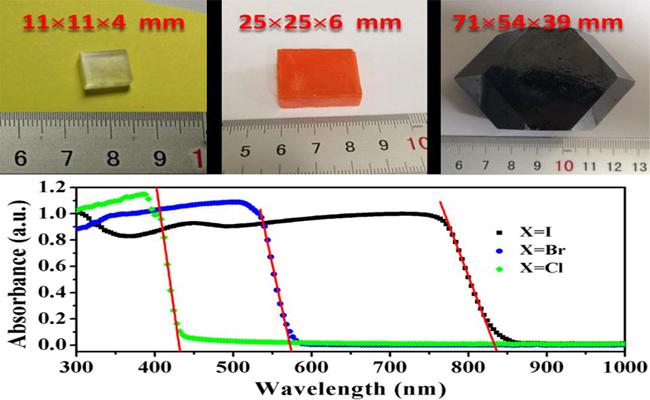Recently, silicon-based solarcell research group (DNL1606) leaded by Liu Shengzhong professor of DalianNational Laboratory for Clean Energy Lab, has developed a facile but fastgrowth method to prepare large single crystalline perovskite CH3NH3PbI3up to >2 inches. To the best of our knowledge, this is the first time toreport the perovskite with crystal dimension exceeded half inch. The relatedresults were published online in the journal of advanced materials (Adv.Mater. 2015, 27 (35), 5176-5183. doi:10.1002/adma.201502597).The Advanced Materials editor gave the article highlyevaluation and wrote a highlight comments, and the comment has been publishedonline at the MaterialViews web site (http://www.materialsviews.com/supersize-single-crystalline-perovskite-crystals-adma-201502597/).

Semiconductor materials with a perfectly aligned lattice structure offerthe best performance, not only in integrated circuits but also in photovoltaicsand opto- electronics, etc. It is the invention of growth techniques forlarge-sized single crystals that has led to the birth of modern electronics,solar cells, solid-state lasers, light emitting diodes (LEDs), and so on. Theorganic–inorganic hybrid perovskite CH3NH3PbX3(X =Cl, Br, I) has emerged as a strong competitor in photovoltaic and generaloptoelectronic applications due to its superior characteristics including highabsorption coefficient, direct band gap, long carrier life time, and highbalanced hole and electron mobility, etc. In fact, the National RenewableEnergy Laboratory (NREL) certificated power conversion efficiency for theperovskite solar cell has reached 20.1%. However, until now, all perovskitesolar cells have been based on microcrystalline and amorphous components,limited by the unavailability of large, single-crystalline material. As thereare plenty of grains, boundaries, voids, and surface defects within theperovskite material, it is expected that significant efficiencylosses will be seen, caused by these recombination sites. So the research teamdeveloped a facial but fast growth method to prepare large single crystallineperovskite CH3NH3PbI3 up to more than 100 mm. Thepowder XRD analyses confirrm the formation at room temperature. Optical-absorptionmeasurements reveal that all three perovskite crystals show broader absorption,compared to their microcrystalline counterparts. In addition, we have observedthe PL emission at 402 nm from CH3NH3PbCl3 forthe first time. Both the TGA and the DSC show that the large CH3NH3PbCl3crystals are more stable at much higher temperature compared to theirthin-film material counterpart. The low trap density and high carrier mobilityindicate that the present large, single-crystalline CH3NH3PbX3(X = Cl, Br, I) is a promising material for high performanceoptoelectronic devices.
This work acknowledge support from the National University Research Fund (GK261001009),the Chang jiang Scholar and Innovative Research Team(IRT_14R33), the 111Project(B14041), and .(Article/Figure Doudou Zhang)



